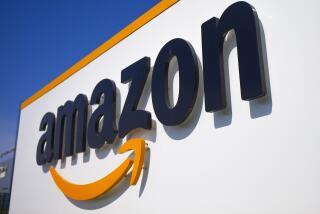Snapchat, Snowden among top 10 tech stories of 2013
In the world of tech, 2013 had it all: mystery, rivalry and breach of privacy. There were drastic redesigns, futuristic devices and a 140-character initial public stock offering.
From smartphone ride-sharing in California to Washington revelations from Edward Snowden, here are the top 10 tech storylines of 2013.
10. California paves the way for ride-sharing
Ride-sharing took the main stage in 2013, with Uber, Lyft and Sidecar leading the way.
These mobile app-based services that let users hail rides from others with their smartphones expanded across California and the U.S., fiercely competing against one another while fending off attacks from the taxicab industry.
In Los Angeles, cease and desist letters were issued, and ultimately, the matter of whether these services were legal was not resolved until the California Public Utilities Commission took up the issue.
In September, the regulatory agency approved rules for how these companies would be regulated, making California the first state to regulate ride-sharing companies. The rules make it legal for these companies to operate and set an example for other states to follow.
9. Vine versus Instagram
Twitter countered Facebook’s purchase of Instagram in 2012 by launching Vine, a video sharing social network, in 2013.
Vine, which lets users publicly post six-second video clips, exploded almost immediately after it was launched in January -- thanks to hilarious submissions -- and hit 40 million users in August.
Twitter’s video app was so successful it ultimately prompted Instagram to add 15-second video capabilities to the photo-sharing app.
8. The rise of Snapchat
The app, which lets users send each other pictures and videos that disappear within seconds after they’re viewed, was already one of the hottest start-ups going into 2013.
It lived up to its hype when Facebook offered $3 billion for the company. That was reportedly followed by a $4-billion offer from Google -- both of which were rejected by founders of the Venice-based start-up.
Snapchat is believed to have at least 30 million monthly active users who are sending out 400 million messages every day. And the app hasn’t shown any signs of slowing down.
Founders are reportedly holding out for a bigger deal, so look for one of the tech giants to pay a hefty sum for Snapchat in 2014.
7. Yahoo buys Tumblr
The highlight of Marissa Mayer’s tenure at Yahoo so far has been the acquisition of Tumblr, a blogging service that has become increasingly popular as a social network, threatening Facebook’s standing with younger users.
Yahoo announced its purchase of Tumblr in May, buying the company for $1.1 billion.
But Yahoo has a poor track record of buying hot start-ups and leading them to their demise, so understandably many users were concerned.
To appease them, Mayer announced Yahoo would be hands off with Tumblr and that its 27-year-old founder, David Karp, would remain in charge of the social network.
6. Twitter goes public
Twitter spent the first half of 2013 readying itself to go public by making its website and apps more user-friendly.
The company disclosed that it filed for an initial public stock offering in a tweet, and in November it went public, opening at $26 a share. Since then, Twitter and its shareholders have been on cloud nine, with share prices surpassing $60.
But going into 2014, analysts are skeptical of Twitter and its high-flying share price. The company will have to deliver continued user and revenue growth if it wants the good times on Wall Street to keep rolling.
5. Apple redesigns iOS for the first time
Since Apple released the original iPhone in 2007, it had never redesigned its iOS mobile operating system, but in 2013, the company gave its iPhone and iPad software a radical face-lift.
Apple infused 2013’s iOS 7 with enough changes to make the platform exciting again while retaining enough of its identity as to not alienate the company’s massive loyal user base.
When the company unveiled the new look over the summer, many criticized the so-called “flat design” and the heavy use of bright, almost neon-like, colors.
But when iOS 7 was released to the public in September, so many users tried to download it all at once that the traffic almost crashed the Internet.
IOS 7 has been a success for Apple thus far, and the drastic change in design has caused many companies to redesign their apps and their own looks in order to fit in with Apple’s mobile platform.
4. Google looks to the future with Glass
The best is yet to come in the field of wearable gadgets, but Google gave users their first taste of these devices with the “explorer” edition of Glass, the company’s high-tech eyewear.
Users wear Google Glass on their heads and connect the device to their smartphones so they can send messages, make voice calls and shoot photos and videos, all hands free. They can also run Glassware apps for playing games and performing other functions.
Google released an early version of Glass in early 2013, and the company has limited the roll out to those who are invited and can afford the $1,500 price tag -- though anyone can get a hold of it on EBay at a higher price.
The Mountain View, Calif., tech giant is expected to release the device to the general public sometime next year, and if it can find the right price point, it may have a consumer hit on its hands.
3. Aaron Swartz’s suicide
The year kicked off on a sad note for the tech world after 26-year-old computer prodigy Aaron Swartz was found dead in his apartment in January.
Swartz, whose many accomplishments included helping develop social news site Reddit and the Web feed format known as RSS, committed suicide as he waited for a federal trial that could’ve resulted in as many as 50 years in prison along with millions of dollars in fines for Swartz.
The young Internet activist was accused of downloading millions of academic articles from JSTOR, a nonprofit database service, while a research fellow at Harvard.
Swartz‘s family and his girlfriend claim he was driven to hang himself because of the “inflexibility” of prosecutors, who they claim were trying to make an example out of Swartz, and a legal system that punishes computer crime too severely.
2. Google’s mystery barge
In October, we were introduced to the Google mystery barge.
CNET reported that Google was almost certainly behind a secret barge that was being constructed in plain sight off of Treasure Island in San Francisco Bay.
Although it couldn’t confirm that Google had direct ties to the floating construction project, CNET uncovered enough clues that eventually led Google to admit that it was behind it.
Initial speculation said the barge could be anything from a floating data center to a massive party boat for the giant tech company. Google didn’t help stem the speculation by later saying that the barge would contain an “interactive space where people can learn about new technology.”
Since then, Google has run into legal problems and may not have the right permits to finish building the barge in the bay. The mystery of the barge captured us in 2013, but this story will continue to play out next year.
1. Snowden exposes the NSA
There was no bigger story in Silicon Valley or in Washington than Edward Snowden’s exposure of the National Security Agency’s vast surveillance program.
In June, the Guardian and the Washington Post began publishing reports about classified documents that had been leaked to them by Snowden, a former NSA contractor who had also been a Central Intelligence Agency employee.
Among the early revelations was an NSA program called PRISM in which the agency was able to access the servers of top tech companies like Facebook, Apple, Google and others to gather information about their users. Snowden has leaked more documents to other publications, leading to more disclosures of NSA’s surveillance activities.
The leaks prompted congressional hearings into the activities of the nation’s spy agency and fueled debate over just how much privacy people give up when using social networks and Internet services.
Snowden is now in Russia, where he is staying under temporary asylum.
ALSO:
Apple iOS Christmas online shopping sales 5 times higher than Android
Watch video game propose marriage to creator’s gamer girlfriend
Amazon says it sold 426 items a second on Cyber Monday







